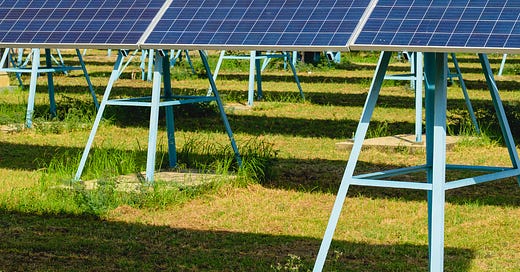By Annette J Beveridge
Fears that solar farms will impact wildlife negatively may be allayed following the release of a new study.
For some time, concerns have been raised about farmland being used for solar farms instead of for food production. Concerns also include the impact of solar farms on wildlife, however, the opposite could be true.
If solar farms are managed with nature in mind and with a mixture of habitats, then this could benefit many species. Scientists have discovered that solar farms contain a greater number of species and more individual birds per hectare than surrounding arable land.
Read more: Tiny super-powered climate heroes
Dr Catherine Waite, researcher at the University of Cambridge and co-author of the study, said: "With the combined climate and biodiversity crises, using land efficiently is crucial.
"Our study shows that if you manage solar energy production in a certain way, not only are you providing clean energy, but benefiting biodiversity."
The report, from the RSPB and the University of Cambridge, was published on Wednesday in the journal Bird Study. Research considered two types of solar farms located in the East Anglian Fens.
The study suggested solar farms did not pose a threat to national food security or wildlife if built on moderate or low-grade agricultural land.
As the UK has committed to reaching its net zero targets by 2050, the need to move away from fossil fuels and use renewable and clean energy is vital so solar farms are likely to be sited on agricultural land in lowland England but it is important to consider the needs of each site.
Read more: Get ready for the master mimic
In some areas, there may be higher densities of farmland species under pressure or in decline.
The study revealed that for the farms which had been managed with a mixture of habitats, and which had resisted cutting back grass while maintaining hedgerows, there were almost three times the number of birds present. This was comparable with arable land close by.
Read more: The brain-eating bird
The RSPB has called for a ‘strategic and spatial approach to planning for renewable energy’ to ensure solar farms are built in areas with a low risk of impact on nature. This means ensuring that for any species in decline - such as yellowhammer, linnets or corn buntings, there must be full consideration for their long-term survival.
Dr Joshua Copping, conservation scientist at the RSPB and lead author of the study, said: "The results of this study suggest that solar farms managed well for nature could make an important contribution and could provide relief from the effects of agricultural intensification."







This is really good to hear!